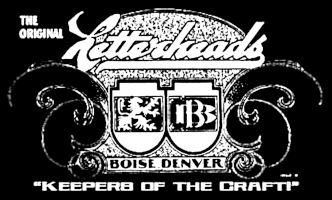I am always trying to learn about antique mirrors and their early processes. The gods were gracious last night!!!
The ONLY THING BETTER would have been if the were backed in PERIOD NEWSPAPERS! lol
I will try to load photos, as for now I am experiencing some problems with uploading.
I just acquired two antique mirrors from a hall stand. They are just plain old silvered mirrors, BUT THEY SPOKE VOLUMES about their manufacture. They are date stamped "1918" and a partial star logo with the words "PATENT SILVER". They are on 5/16" "boiler plate" glass, a nice vaseline green tint in their thickness. Each was scored and cut with a DIAMOND TIPPED CUTTER. They were ground perfectly flat and optically repolished on both sides for good mirror quality. Each was cut from clear glass to size and shape and then silvered. This is seen in the tarnished silver run off left on the edge of the glass, plus the backing paint also has drips over the edge. BEST OF ALL, there remains amounts of the fine dry RED ROUGH used within the shop to polish beveled glass. It may have also been used in place of whiting to work the glass completely clean prior to silvering. The mirror was made in these steps: cleaned, tinned, silvered, dried, brushed with a thin coat of orange shellac, and then brushed with a thin coat of white lead oxide mixed into boiled Linseed oil and allowed to dry, then a final thin coat of brown litharge(termed as "massicot") mixed in boiled linseed completed the mirror backing protection. I tested a small area of the backing paint with a Q-Tip dipped in lacquer thinner, Acetone, and one in Denatured Alcohol and NONE of them had ANY EFFECT in dissolving or even disturbing that backing paint. INCREDIBLE!! I am beginning to think that NOTHING common with redissolve boiled linseed oil once it completely cures, even through these past decades.
Welcome to The Hand Lettering Forum!
This is an interactive Bulletin Board on the topics of Sign making, design, fabrication, History, old Books and of coarse Letterheads, Keepers of the craft. The Hand Lettering Forum features links to resources, sign art history, techniques, and artists profiles. Learn more about Letterheads at https://theletterheads.com. Below you'll see Mchat has been added as a live communication portal for trial, and the Main forum Links are listed below.
This is an interactive Bulletin Board on the topics of Sign making, design, fabrication, History, old Books and of coarse Letterheads, Keepers of the craft. The Hand Lettering Forum features links to resources, sign art history, techniques, and artists profiles. Learn more about Letterheads at https://theletterheads.com. Below you'll see Mchat has been added as a live communication portal for trial, and the Main forum Links are listed below.
1918 mirroring forensics
Moderators: Ron Percell, Mike Jackson, Danny Baronian
-
Patrick Mackle
- Posts: 478
- Joined: Thu Apr 08, 2004 10:21 am
- Location: Monrovia, Ca.
- Contact:
 Denver Chapter of the Letterheads
Denver Chapter of the Letterheads